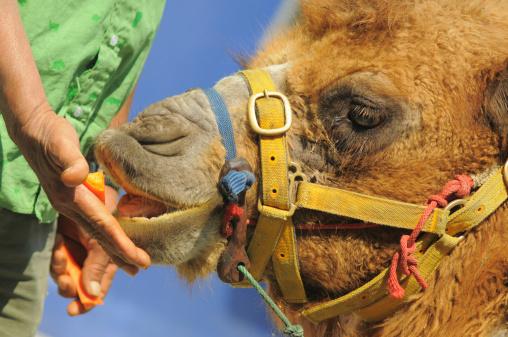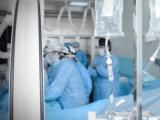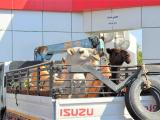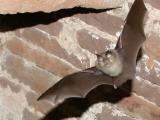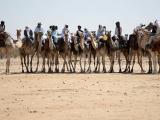One year after the Middle East respiratory syndrome coronavirus (MERS-CoV) was first reported, the pathogen is still mostly a puzzle.
Scientists have some clues, but they still don't know what animal the virus came from or how it jumps from animals to people or from person to person. Nor do they know how long an infected person can spread the virus to others.
While it's known that some people can get infected and have no symptoms, no one knows whether those people can pass the virus along. An effective, widely available treatment for the illness remains a distant goal, as does a vaccine.
Many experts complain that the flow of scientific data on MERS-CoV has been strangely slow. They contrast the MERS-CoV situation with what happened during the SARS (severe acute respiratory syndrome) epidemic 10 years ago.
SARS, caused by another coronavirus, first surfaced in southern China in late 2002. It reached Hong Kong that winter, triggered a World Health Organization (WHO) alert on Mar 15, and followed airline routes from Hong Kong to about 30 countries around the world, leading to roughly 8,000 cases and 800 deaths (figures vary). The disease sparked a major international response, and by July it faded away.
"SARS was recognized, identified, and controlled, all within a period less than the current period for MERS," said Mark Pallansch, PhD, leader of MERS activities for the US Centers for Disease Control and Prevention (CDC).
The two situations are not parallel in all respects, most notably in the number of cases, but data about SARS flowed much more freely than has been the case with MERS, experts say. The reasons are complex and unclear, but some say one factor is that during SARS, scientists shared their data informally—before journal publication—much more than they have with MERS.
The response to MERS-CoV has had some bright spots, particularly the development of diagnostic tests and the provision of guidance to governments dealing with the disease, according to observers. But the prevailing sense is frustration that so many questions remain.
130 cases in first year
It was on Sep 20, 2012, that an Egyptian microbiologist in Saudi Arabia, Ali M. Zaki, MD, PhD, reported the isolation of a novel coronavirus from a 60-year-old man in Jeddah. Since then, the WHO has confirmed 130 cases with 58 deaths. Saudi Arabia has reported the vast majority of cases—107, with 49 deaths—and all cases have occurred in or had links to the Middle East, including Qatar, the United Arab Emirates, and Jordan.
Several family and hospital-based case clusters have been reported, including a hospital-based cluster of 23 cases in eastern Saudi Arabia earlier this year. But sustained human-to-human transmission has not been seen, and the European Centre for Disease Prevention and Control (ECDC) considers the risk for a MERS pandemic to be low. On the other hand, new cases keep flaring up, one or a few at a time, in the Middle East.
The hunt for the virus's animal source has focused on bats and camels. Bats harbor closely related coronaviruses, and researchers recently reported that a fragment of DNA found in a bat from Saudi Arabia matched MERS-CoV, but others have questioned that finding.
Other scientists have found antibodies to MERS-CoV or a closely related virus in dromedary camels in Oman, Egypt, and the Canary Islands, suggesting past infection. They haven't found the virus itself, however.
The sporadic pattern of human cases has left scientists puzzled as to whether some animal, such as camels, is repeatedly passing the virus to humans or whether the pathogen is continually spreading in people but with many cases going undetected.
They say case-control studies—comparing the experiences and habits of case-patients and healthy peers—are badly needed to sort out how people are getting exposed to the virus. Also, they call for stepping up the hunt for the virus in animals.
A 'disappointing experience'
Christian Drosten, MD, director of the Institute of Virology at the University of Bonn Medical Centre in Germany, who has studied MERS-CoV, calls the overall response to the virus "a disappointing experience overall. I would not have expected everything to move so slow."
He sees a complex combination of reasons for the slow accumulation of data, including limited sharing of material and "probably misleading components" in the data that have been released.
"For example, we still don't know whether to throw everything at trying to identify an animal reservoir, or whether that's an obsolete thing. We still don't know if it [an animal] is a continuous source," he said. "We still have to address everything in both direction—human and animal investigations."
Findings so far suggest that MERS-CoV spreads less efficiently than the SARS virus, but "we're not looking at a database of any reasonable quality currently," Drosten said.
He said the shortage of data makes the question about sporadic animal-to-human cases versus continuing human-to-human transmission unanswerable at this point, but he leans to the view that undetected human-to-human transmission is going on.
"If you have a very incomplete picture, what you will see will always appear as sporadic [cases], and you can discuss whether a cluster involves an animal," he said. "Is it really a big series of transmission chains, or are we recording everything that's out there?" He suspects that what's happening is "actually an unnoticed background circulation."
Another close observer of MERS, Michael T. Osterholm, PhD, MPH, agrees with Drosten on that point.
"I believe that based on what we've seen so far epidemiologically and clinically, there probably is an unrecognized chain of infection going on in Saudi Arabia," said Osterholm, who is director of the University of Minnesota's Center for Infectious Disease Research and Policy, publisher of CIDRAP News. "I don't think these all represent cases coming out of a human-animal interface; I think a number of milder cases are being missed and are sustaining transmission."
Osterholm said this week's report in The Lancet of several different MERS-CoV genotypes in Saudi Arabian patients doesn't change his thinking on this point.
"If anything it provides more support that there could be a few additional animal-to-human transmissions, but there aren't many," he said. "In the big picture of things, the epidemiology strongly suggests continued human-to-human transmission, and that we're missing potentially milder cases but nonetheless infectious cases."
Information impediments
Drosten says there are probably political and cultural factors impeding the circulation of data on MERS-CoV, but adds, "One factor that seems obvious to everybody is there are delays in essential information. Scientists are looking to preserve their publication, so that they can publish their data."
By contrast, during the SARS battle there was a group of laboratories that shared information with one another before it reached the pages of journals, he said. "Now we face a situation where public health entities are surprised by reports coming out in big journals, and they see data for the first time as they are published. In SARS they saw it much sooner. . . . The most essential stuff was put completely open."
Pallansch agrees wth Drosten: "Having been involved with both episodes and comparing the availability of equivalent data, that impression is certainly valid." He said the international community has had to wait for publication to see much of the data on MERS-CoV, whereas with SARS, "almost every significant finding was available to the international community before publication." He said he can't explain the difference.
Drosten says that even when research studies are published, the reports don't always contain all the important information. "The question is, do we have a filter in the pipeline there? . . . In several instances now, it turns out that the essential information was not in the public domain."
Marc Sprenger, MD, PhD, director of the ECDC, agrees that the supply of data on MERS-CoV has been less than ideal.
Commenting on why many questions remain unanswered, he told CIDRAP News via e-mail, "Information arising from the initial outbreak investigations being carried out in the main affected countries (testing of contacts around a case, results of the investigation of the outbreak in health care facilities, findings of any missions etc) in the Arabian Peninsula have not been as forthcoming as we would have wished. And it is not always clear what investigations are underway and what stage are they at."
He added that studies into possible animal reservoirs for the virus have taken some important steps forward, "but we are still waiting for some more definitive evidence."
"It is worth pointing out, however, that there has been a positive change in information flows recently, with more detail and greater timeliness of data on confirmed cases being shared by those countries seeing most of the cases," Sprenger said. "We would like to see that trend of more and better information flows continuing."
Pushing for information
Osterholm is critical of global and national public health agencies for not pushing harder for information from the countries affected by MERS.
"It's puzzling why the WHO and other major public health agencies in other countries haven't been more vocal about the need for these case-control studies and data sharing to happen," he said. "I realize there are things going on behind the scenes, but when you don't get the response you need, I think it's really important for public health agencies to make it clear how important this information is.
"If suddenly we do have a pandemic associated with this, everybody's going to look back and say, 'Why didn't we know more about what was happening in Saudi Arabia?' "
He also decries Saudi Arabia's oft-stated position that it needs guidance from the World Organization for Animal Health (OIE) and the UN Food and Agriculture Organization (FAO) on how to hunt for the virus in animals: "It just doesn't make sense that Saudi Arabia had to wait for the FAO to come in and do an in-country review before starting to explore animal reservoirs. China started doing that [with regard to the H7N9 avian influenza virus] long before the FAO came in."
The FAO now has a team in Saudi Arabia to assess possible animal sources, according to a story this week in Nature. Juan Lubroth, DVM, PhD, the agency's chief veterinary officer, told the journal the team headed for the country last weekend, and several more missions will follow.
CDC efforts
More animal data are expected soon from other researchers as well. Pallansch said the CDC is currently testing for MERS-CoV antibodies in camel samples from Israel. He said the agency received hundreds of samples this week, and it will probably take a couple of weeks to get the results.
In other MERS-CoV activities, the CDC has been working to improve diagnostic capacity by holding training workshops in countries that request them, most recently in Jordan, Pallansch said. The agency has sent diagnostic test kits to a long list of countries.
He said it's unclear to what extent countries are testing for MERS-CoV in severe acute respiratory disease cases. A handful of countries have clearly increased their testing in such cases, but for many countries, he doesn't know "if they are testing internally and getting all negatives or are not doing testing."
One of the difficulties with MERS-CoV is that serologic tests, which tell investigators if a person was previously exposed to the virus, have not yet been fully validated. The tests need to be validated by using them on patients known to have had the disease.
The CDC has developed four different serologic assays, Pallansch said. "The specificity testing has been done to a great extent on two of the assays so far, so we feel quite comfortable with use of those. The additional validation is still an ongoing topic of discussion among international organizations, including CDC. And we do not have a final plan for how to establish validation panels for use in this process for not only CDC but other agencies that have similar need."
Drosten said there is only one confirmatory serologic test, the neutralization assay, and it requires manipulation of the virus in a lab, which is cumbersome and has biosafety implications. He added that it will take a collaborative series of studies by several different labs to bring the serologic tests up to speed.
Research priorities
To Pallansch, the top research priority is to discover the source of infection. "Where these people get infected, what is the source or root of exposure are key to understanding the different epidemiology we see with MERS compared to SARS," he said. "SARS was dominated early on by human-to-human transmission, but that seems to be only a partial explanation for a lot of the cases [of MERS]."
And with SARS, the recognition that person-to-person transmission was clear and widespread made the question of the animal source less critical, he commented. (Investigators did determine that the virus jumped to humans from civets.)
Another key question is the extent of mild and asymptomatic infections (a number of which have been reported recently) and their role, if any, in spreading the virus, he said. The information is crucial for limiting transmission.
"In SARS, it was the recognition of the period of infectiousness that allowed for the ability to control SARS by isolation and infection control in targeted populations," Pallansch said. "We still need more detail in that type of information to reduce transmission in different settings."
He also commented that virus sequences were available to scientists much faster during SARS than has been the case with MERS. "There are certain basic elements of the investigation which to date are still not equivalent to some of the investigation with SARS," he added. "Part of this is the tools; some were available much earlier with SARS than with MERS."
Successes noted
Despite the problems with data flow and access, some things have gone well in the MERS response, according to the experts.
"I think some of the biggest successes have been the early recognition of cases and related infection control practices in those cases seen outside the Middle East," said Osterholm. "The German, British, and Italian cases have been handled quite well."
Pallansch said another positive development is that diagnostic (polymerase chain reaction) tests were made available to many countries within a few weeks, which didn't happen with SARS. "And that's a reflection that in the decade in between, technology has evolved dramatically."
Another bright spot has been the ability to provide guidance to countries quickly, he said. "Many of the lessons learned from SARS and influenza made it easier to make sure that many of the key pieces of information could be provided rapidly, and that guidance was provided to countries and hospitals in how to deal with the new agent."
Sprenger commented that international cooperation "has been generally very good." He said the ECDC has worked closely with the WHO and CDC, and has also worked with European authorities to develop case definitions and guidance for dealing with travelers suspected of having MERS, among other initiatives.
See also:
Today's CIDRAP News story "WHO raises concerns about MERS-CoV patterns and pace"
Sep 21, 2012, CIDRAP News item on first report of MERS-CoV
